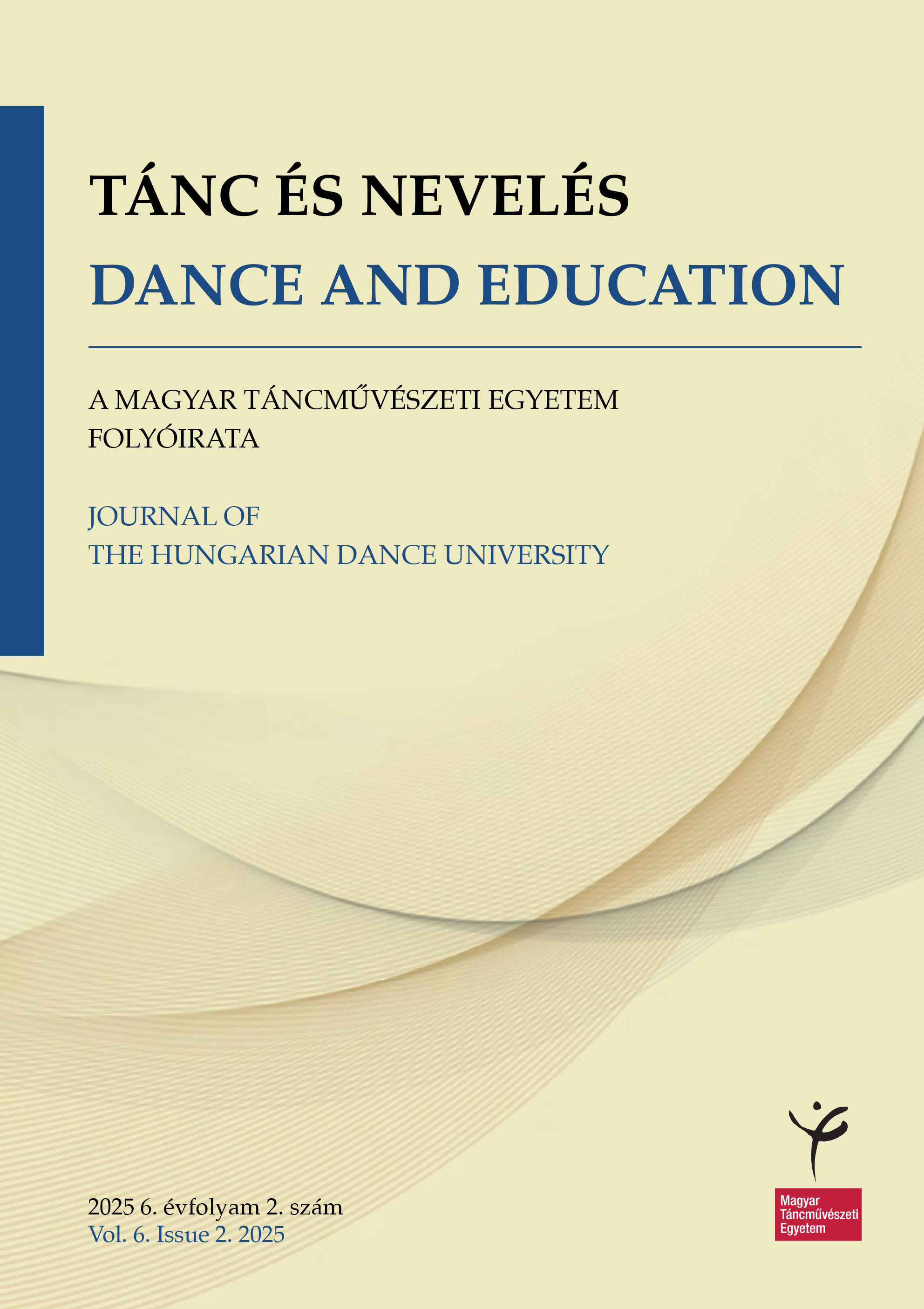The Place and Role of Dance in the History of Physical Education in Hungarian Public Schools (1868–2024)
Abstract
This study explores the changing role of dance in Hungarian physical education from the 1868 Public Education Act to the present. Dance has never held a stable place in school curricula: at times, it served as a key medium of aesthetic education, national identity, and community building, while in other periods it was marginalized in favor of military drills, gymnastics, or fitness trends. Using qualitative and quantitative methods (i.e., historical document analysis, content analysis of pedagogical journals, and systematic examination of curricula and the National Core Curricula), the research reveals how political shifts, cultural priorities, and professional debates have shaped the educational perception of dance. Although dance was repeatedly excluded from official curricula, particularly after 1952, it persisted through extracurricular clubs, teacher initiatives, and alternative programs such as Waldorf education and the Value Mediation Program. Reintroduced into public education by the 1995 National Core Curriculum, its implementation remained limited due to insufficient teacher training. Overall, the findings demonstrate that dance functions both as cultural heritage and as a contemporary pedagogical tool, reflecting enduring tensions between tradition, health, identity, and creativity.
Copyright (c) 2025 Éva Láng, János Gortva

This work is licensed under a Creative Commons Attribution 4.0 International License.







4.png)
